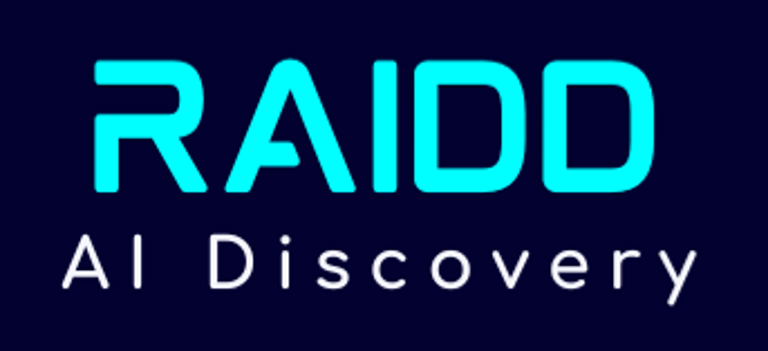Unleashing the Power of Generative AI - [TECHNICAL]
FOUNDATIONS - TECH


Generative AI is a revolutionary technology that creates new content by learning from existing data, impacting fields like art, healthcare, and entertainment. Its ability to adapt and improve over time sets it apart. However, it also raises ethical concerns around privacy and bias.
Unleashing the Power of Generative AI - [TECHNICAL]
Unleashing the Power of Generative AI
Generative Artificial Intelligence (AI) is a groundbreaking technology that has revolutionized numerous fields. With its ability to create new content and mimic human creativity, generative AI is becoming increasingly prevalent in various industries. In this article, we will explore the intricacies of generative AI, its mechanisms, applications, and the ethical considerations surrounding its use.
Understanding Generative AI
Generative AI refers to a branch of machine learning that involves creating new data by training models on existing datasets. Instead of relying on pre-defined rules or explicit instructions, generative AI models learn patterns and generate new content autonomously. This ability to mimic human creativity distinguishes generative AI from other forms of AI.
One fascinating aspect of generative AI is its capacity to adapt and evolve over time. As these models continue to learn from new data inputs, their ability to generate content improves, leading to more sophisticated and realistic outcomes. This iterative process of learning and creation sets generative AI apart as a dynamic and innovative field in the realm of artificial intelligence.
The Basics of Generative AI
To understand generative AI, it is essential to grasp the concept of generative models. Generative models are algorithms that learn patterns from given input data and then generate new data with similar characteristics. These models can be trained on various types of data, including images, text, and even audio. With generative AI, the possibilities for creating new content are endless.
Furthermore, generative AI models can be categorized into different types, such as Variational Autoencoders (VAEs) and Generative Adversarial Networks (GANs), each with its unique approach to generating content. VAEs focus on learning the underlying structure of data to generate new samples, while GANs operate by pitting two neural networks against each other to improve the quality of generated outputs. Understanding these nuances in generative AI models is crucial for leveraging their capabilities effectively.
The Role of Generative AI in Technology
Generative AI plays a pivotal role in advancing technology. By harnessing the power of generative models, developers can create realistic images, generate compelling stories, and even compose music that is indistinguishable from human creations. The application of generative AI extends to fields such as entertainment, marketing, and even healthcare, enhancing user experiences and opening new avenues for innovation.
In the realm of healthcare, generative AI is revolutionizing medical imaging by generating high-quality scans and aiding in the early detection of diseases. This technology not only expedites the diagnostic process but also improves the accuracy of medical assessments, ultimately leading to better patient outcomes. The intersection of generative AI and healthcare showcases the profound impact this technology can have on improving human lives and transforming traditional practices.
The Mechanism Behind Generative AI
Generative AI operates through complex mechanisms that involve learning patterns and generating new content. The science behind generative AI models is driven by neural networks, which are computational systems inspired by the human brain. Neural networks are composed of interconnected nodes or "neurons" that process and transmit information.
One fascinating aspect of generative AI is its ability to create entirely new content that mimics the style and characteristics of the data it was trained on. This process involves intricate calculations and adjustments within the neural network to produce outputs that are not merely copies of the input data, but rather novel creations.
The Science of Generative Models
Generative models leverage deep neural networks to learn patterns from given datasets. These models consist of several layers, each responsible for extracting different features and generating new information. By training these models with massive amounts of data, generative AI systems can learn and replicate the underlying patterns, ultimately generating new content.
Within the layers of a generative model, information is processed in a hierarchical manner, with lower layers capturing basic features and higher layers synthesizing more complex attributes. This hierarchical structure allows generative AI to understand and recreate intricate details, leading to the generation of realistic and coherent outputs.
Training Generative AI Systems
Training generative AI systems involves feeding them with vast amounts of data. Through an iterative process, these systems learn to identify patterns and generate new content that aligns with the data they were trained on. The training process involves adjusting model parameters and hyperparameters to improve performance and achieve better results.
Furthermore, the training of generative AI systems requires careful consideration of the quality and diversity of the dataset. A diverse dataset ensures that the model learns a wide range of patterns and can generate varied outputs. Additionally, techniques such as regularization and augmentation are employed to prevent overfitting and enhance the generalization capabilities of the AI system.
Applications of Generative AI
Generative AI has a wide range of applications across various industries. Let's explore a few of them:
Generative AI in Art and Design
Artists and designers are increasingly leveraging generative AI to fuel their creativity. By inputting a few parameters or constraints, generative AI models can autonomously generate artwork, designs, and even entire virtual worlds. This technology enables artists to explore new frontiers and push the boundaries of what is considered possible in the realms of art and design.
One fascinating aspect of generative AI in art and design is its ability to collaborate with human creators. Artists can use generative AI as a tool to inspire new ideas, break creative blocks, or even co-create pieces. This synergy between human creativity and machine-generated output opens up a realm of possibilities, where the boundaries between artist and machine blur, leading to innovative and thought-provoking creations.
Generative AI in Medicine and Healthcare
Generative AI has the potential to revolutionize medicine and healthcare. By analyzing vast amounts of patient data, generative AI models can assist in diagnosing diseases, predicting treatment outcomes, and even developing new drugs or treatment regimens. The ability of generative AI to generate realistic medical images also holds promise for training medical professionals and enhancing surgical planning.
Moreover, generative AI can be utilized in personalized medicine, where treatment plans are tailored to individual patients based on their unique genetic makeup and medical history. This customization can lead to more effective treatments with fewer side effects, improving patient outcomes and overall healthcare quality. The integration of generative AI in healthcare not only enhances efficiency but also opens up new avenues for cutting-edge research and innovation in the medical field.
The Future of Generative AI
As generative AI continues to evolve, new trends and advancements are shaping its future. Let's take a look at a few key developments:
Emerging Trends in Generative AI
One emerging trend in generative AI is the use of reinforcement learning techniques to enhance the performance of generative models. By incorporating reinforcement learning algorithms, generative AI systems can learn from trial and error, improving their ability to generate more accurate and realistic content.
Another significant development in generative AI is the exploration of unsupervised learning methods. Unsupervised learning allows AI systems to analyze and learn from data without the need for labeled examples, enabling them to discover patterns and structures independently. This approach opens up new possibilities for generative AI to create innovative and diverse content.
Potential Challenges and Solutions for Generative AI
While generative AI holds immense potential, it also presents several challenges and concerns. One major challenge is the risk of bias and unethical content generation. Ensuring fairness and transparency in generative AI systems is crucial to prevent the reinforcement of harmful stereotypes or the dissemination of misleading information. Implementing rigorous ethical guidelines and diverse training datasets can help mitigate these challenges.
Another pressing issue facing generative AI is the need to address the environmental impact of training large-scale models. The computational resources required to train and deploy generative AI systems can have a significant carbon footprint. Researchers and developers are actively exploring energy-efficient training methods and model optimization techniques to reduce the environmental impact of generative AI technologies.
Ethical Considerations of Generative AI
As generative AI gains prominence, addressing ethical considerations becomes essential to ensure responsible and beneficial use of the technology. Let's explore a couple of critical ethical considerations:
The Debate on AI and Privacy
Generative AI systems, especially those trained on personal data, raise concerns about privacy. There is an ongoing debate around the potential implications of generative AI for data privacy and security. Striking a balance between the benefits of generative AI and protecting individuals' privacy is crucial and requires robust legal and ethical frameworks.
Imagine a world where generative AI has the ability to generate highly realistic images of people based on a few input parameters. While this technology has the potential to revolutionize industries like entertainment and advertising, it also raises concerns about the misuse of personal data. For instance, if someone's personal information falls into the wrong hands, it could be used to create fake images or videos that can be used for malicious purposes, such as identity theft or spreading misinformation.
To address these concerns, it is important to establish strict regulations and guidelines to govern the collection, storage, and use of personal data in generative AI systems. This includes obtaining informed consent from individuals whose data is used, implementing robust security measures to protect the data, and ensuring that the generated content is used responsibly and ethically.
Ensuring Fairness and Transparency in AI
Generative AI models must be developed with fairness and transparency in mind. Bias in data can result in biased content generation, reinforcing societal inequalities. Adopting techniques to identify and mitigate biases, while involving diverse perspectives in the creation and training of AI systems, is essential for ensuring fairness and transparency.
Consider a generative AI system that is trained on a dataset that predominantly consists of images of people from a specific racial or ethnic group. If this biased dataset is used to generate content, it can perpetuate stereotypes and marginalize underrepresented communities. To avoid such biases, it is crucial to ensure that the training data is diverse and representative of the population it aims to serve.
Additionally, transparency in the decision-making process of generative AI systems is vital. Users should have a clear understanding of how the system works, what data it uses, and how it generates content. This transparency allows users to make informed decisions about the content they consume and helps build trust in the technology.
In conclusion, generative AI has the potential to unleash unprecedented possibilities in various industries. From creating stunning artwork to transforming healthcare, the power of generative AI is revolutionizing the way we perceive and interact with technology. As we continue to harness the potential of generative AI, it is crucial to consider the ethical implications and work towards responsible and inclusive deployment of this powerful technology.
